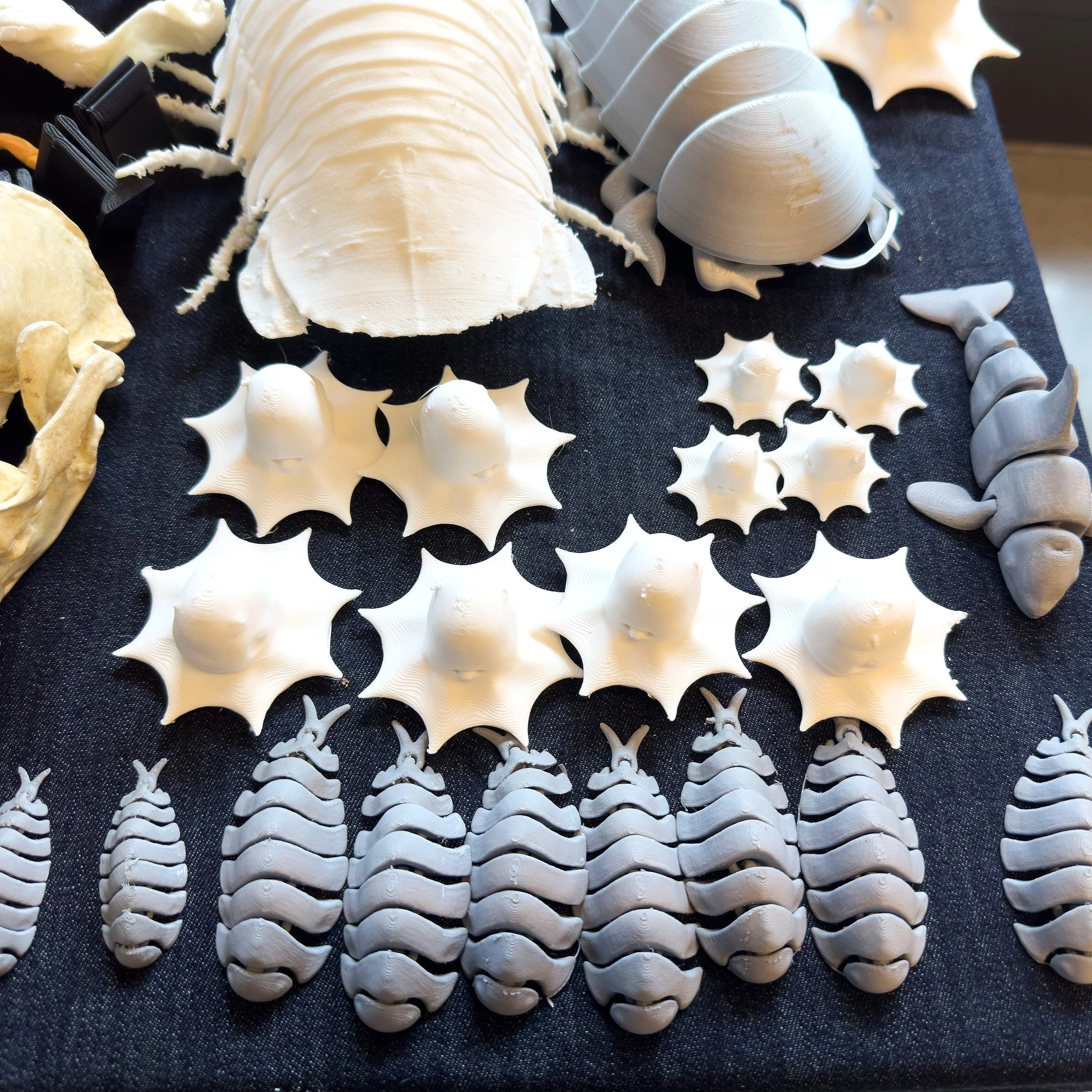Luis David Calderon
He. Him. El
About Me
I’m a Mexican-American maker, educator, and multimedia artist whose work transforms constraints into creative solutions. For the past nine years at Monterey Bay Aquarium, I’ve pioneered sustainable approaches to maker-centered education, blending hands-on engineering with culturally responsive education. My practice is rooted in the resourcefulness I learned from my family, like watching my grandmother repurpose fabric scraps into new creations, my grandfather weld functional pieces for my hometown community, and my father’s established electronics repair business rooted in Right to Repair principles. This multigenerational perspective informs how I prototype with intention, ensuring every design serves both educational and environmental goals.
My work lives at the intersection of:
Resourceful fabrication (3D printing, laser cutting, upcycled materials)
Equitable design (bilingual, accessible, and intergenerational approaches)
Mission-driven making (conservation-focused solutions)
Prototyping: Sea Urchin Mouth
1. Research and Development
The project began with a research phase to accurately replicate the sea urchin's unique mouth structure. I started prototyping with cardboard, creating multiple iterations to test functionality and movement. This included developing an aperture model to study how the urchin's pentaradial symmetry could be translated into an interactive educational tool. Each version brought new insights into how to best mirror the animal's natural feeding mechanics while keeping the design accessible for hands-on learning.
2. Material Limitations and Innovation
As testing progressed, I explored ways to overcome cardboard's structural constraints. Laser-cutting allowed me to create flexible segments out of wood that could mimic the urchin's mouth movement. My breakthrough came when I combined these laser-cut pieces with DIY prosthetics build, using plastic straw "joints" activated by pull strings. This low-cost solution successfully replicated the urchin's complex biting motion, demonstrating how creative material use can achieve sophisticated mechanical functions.
3. Solving Durability Challenges
Frequent demonstrations revealed weaknesses in the wooden joints, which consistently failed under repeated use. This led me to adapt a 3D printed mechanism from a trash picker tool, reengineering it with pentradial symmetry and custom teeth. The new version maintained the educational functionality while dramatically improving durability. This evolution from fragile cardboard and wood to robust 3D printed components showcased the importance of iterative testing and material adaptation in prototyping.
4. Implementation and Legacy
The final prototype proved valuable in our field trip programs, giving students a hands-on understanding of sea urchin biology. While the model's lifespan was limited, its success directly informed professionally developed versions still used in our classes today. This project demonstrated how educator prototyping can bridge the gap between temporary solutions and permanent exhibit components, while maintaining scientific accuracy and engagement.
3D Printing Projects
Innovation in Education
My work merges fabrication with pedagogy, from designing laser-cut iPad labels that transform digital learning into tactile, memorable experiences, to crafting custom volunteer tokens in wood and acrylic that celebrate contributions with durable, ocean-inspired designs. I’ve also addressed inclusivity through making, pioneering interchangeable pronoun inserts for laser-cut nametags. Small but meaningful changes that foster belonging. Whether prototyping durable teaching tools or rethinking how we recognize participation, each project reflects my belief that thoughtful design can deepen engagement in innovative ways.




















Where Science, Making, and Art Meets Imagination
Beyond prototyping tools, I explore ocean conservation through ink and digital art. My Instagram project @SquidInkSketch blends scientific accuracy with whimsical storytelling. Whether sketching deep-sea creatures or highlighting the geometrical beauty marine life. These pieces remind me why our technical work matters: every repair, 3D-printed model, and upcycled prototype helps protect the ocean that inspires my art.
Just as I approach prototyping with resourcefulness, my art practice embraces constraints. Every year I take part in an art challenge called “Inktober”, where I adapt a list of 31 random words and blend them with ocean-themed art. This creative mindset directly informs my engineering process at Monterey Bay Aquarium, where I design for a varied audience with the goal of sparking curiosity.
Follow along for behind-the-scenes sketches of fictional concepts, marine life studies, and the occasional pokemon cameo."
Swipe to see how art shapes my technical work →

















